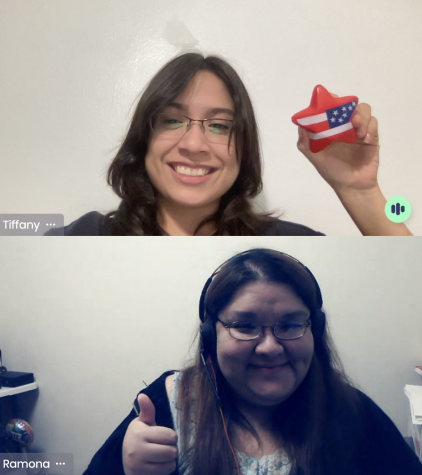Talking Politics with Unity, Not Uniformity
COD students participated in the nation-wide Unify America Challenge and shared their thoughts on how to build understanding in politics.
Unify America fosters constructive dialogue between people to solve our country’s political divide. Graphic provided by Unify America.
October 10, 2022
Imagine being in a room for one hour with a stranger, and the only thing you can discuss are your most controversial political views. This is the premise of the Unify America Challenge. Participants sign up for virtual meetings and are matched with anybody else from across the United States.
It’s a very guided experience, with helpful on-screen instructions and recordings of the Unify America organizers explaining how the program works. Carol Vederman, who is the engagement manager of Unify America, explained, “It’s a guided video conversation that you’ll take with another American who may vote or think differently than you.”
This is determined through the sign-up process. Participants select their political leaning and the party they vote for. After matching with a partner of opposing views, the screen displays questions about debatable political topics, like abortion rights, gun legislation and immigration policies.
The participants are given up to five minutes to discuss the topic. Then, they privately answer whether they strongly agree, agree, disagree, strongly disagree, or have no opinion. This allows them to answer differently than their partner, without feeling pressured. It emphasizes the main function of the Unify America meetings – to foster conversation and still allow for diverging thoughts.

Lindsay Newman, a student in a COD political science class, participated in the Unify America Challenge. She was both nervous and excited before the meeting, unsure of what to expect from her political opposite.
“I frequently found myself asking my partner ‘why’ and ‘how’ questions to understand the backstory of her political perspectives,” Newman said. “Why do you believe that abortion should be illegal, or how did you learn to change your opinion on transgender rights?”
Tiffany Cuevas, from the same political science class, matched with a college student named Ramona. As they introduced themselves and began talking more comfortably, it grew easier to get through the political questions.
“We talked about topics that ranged from gun control to climate change. Though I won’t lie, there were some parts where we disagreed; we were able to respectfully share why we thought so.”
Having gone through the experience, Cuevas said the challenge created a constructive way for people to disagree, while also learning why people have a variety of political beliefs.
“I think having conversations like these scares people because you see what’s on the news, and its people arguing when they’re supposed to have a civil discussion,” Cuevas said. “There has to be communication between all sides of the political spectrum. If we can’t completely agree with each other then there should at least be some compromise.”
For some, there are more compromises than they would expect. To her surprise, Newman and her partner matched in their answers to 16 out of 17 questions. She attributed this overarching similarity to the mostly college-aged participants of the program.
“Gen Z, as a whole, tends to lean liberal in their political viewpoints, which may make it harder to pair everyone with true political opposites,” Newman said.

This brought up the way generational gaps affect political views. Newman gave her perspective on the role of social media in reinforcing people’s political views, especially teens.
“I kind of see it as almost a facilitator of confirmation bias,” Newman said. “Algorithms are showing you exactly what you like.”
She further explained that when someone clicks videos, posts or articles that align with their views, as more left or right-leaning, the algorithm will show them more of the same content. It isolates the user from opposing sources or reduces them into a hostile “other.”
“We can end up with two completely different political realities. If you’re not educating ourselves on center ideas, in the sense that it’s just politically neutral facts, that’s where polarization stems from.”
For her research essay project in her political science class, Newman plans to delve deeper into how Americans are harmed by extreme partisan polarization.
“It’s possible to disagree with someone’s perspective, yet still understand and validate the premise of their belief,” Newman said. “You don’t have to agree with the other side. You just need to understand them.”
Newman encouraged open conversations, empathy for their life experiences, and sharing personal motives for why they vote the way they do. “One thing I really strive to do is get to a place where I can not only explain what the other side’s ideologies are but also explain why they think that,” she said.
This is substantiated with feedback data from overall participants of Unify America. Vederman, Unify America’s engagement manager, said 72% of participants agreed the Unify Challenge helped them understand people have good reasons for voting differently. That includes Cuevas.
“That’s one of the good things about America,” Cuevas said. “We are able to express ourselves freely. It’s so rewarding when you’re able to sit down with another person to talk.”
After taking the Challenge, 68% of participants said they felt more hopeful about the future of our country. Any American can participate in the Challenge at any time, on the Unify America website.



















Stephanie • Oct 12, 2022 at 8:59 am
Thank you for covering this unique opportunity for students to connect with other students across the country! I hope more students participate in the Unify Challenge College Bowl when it is offered this spring.